With toy sales on the rise, specialty retailers are getting in on the fun and boosting business. By Lyndsay McGregor After a sluggish few years, sales are finally stacking up for the toy industry. Toy sales in the United States are forecast to be $19.9 billion in 2013, in comparison with sales between $16 billion […]
With toy sales on the rise, specialty retailers are getting in on the fun and boosting business.
By Lyndsay McGregor
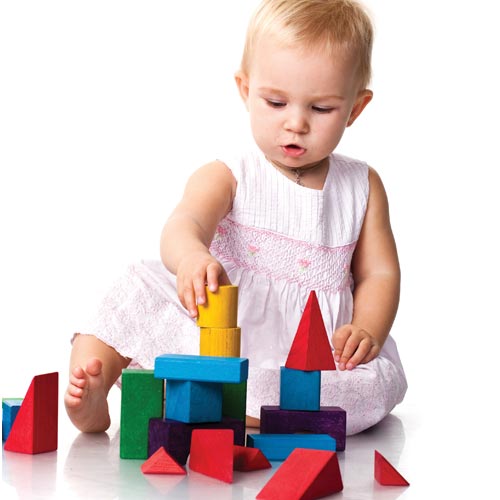
After a sluggish few years, sales are finally stacking up for the toy industry. Toy sales in the United States are forecast to be $19.9 billion in 2013, in comparison with sales between $16 billion and $17 billion in recent years, according to market research firm Euromonitor. However, the lion’s share of these sales went to online behemoth Amazon, whose marketplace offering leverages thousands of third-party merchants—and even big box stores felt the heat.
Alarm bells need not ring yet, however, for independent retailers looking to tout their toy selection. Blair Everett, U.S. distributor for plush toy company Ragtales, says that his best customers, year to year, are high-end childrenswear stores. “Children’s retailers recognize the value to their customers of offering gift items that include toys. The convenience factor is considerable for the consumer and it’s an opportunity for the retailer to add to his total margin,” he says. Kathy Gray, co-owner of Lark Toys in Kellogg, MN, says specialty stores can get in on the action in 2014 by finding their own niche and becoming known in their nabe for a particular type of toy. Not sure where to begin? Here are the top trends, from tech to traditional, that will be wrestling for consumer dollars this year. Is your store ready to play?
RECONSIDER GENDER
Every Toys “R” Us, Target and Wal-Mart is split into boy and girl sections, the former filled with action figures and construction sets, while the latter is a sea of pink sparkles. But the backlash has begun. Consumers are starting to steer their children toward toys that require them to use their imagination, regardless of who they’re marketed for, and independent retailers should seize the moment. Just witness the skyrocketing sales of last year’s hit toy, the Rainbow Loom, a bracelet-making gizmo that appealed to boys and girls alike.
“Children are unique, and while growing they are unfolding their unique selves. Toys can offer ways to try out interests and ideas, so each child should have the chance to select from a wide range of them,” Gray says, pointing to tried-and-true Spirograph, which retails for around $25 a set, and LunaStix juggling sticks, as gender-neutral examples that consistently sell well at her store. “Toys should be more open-ended so that children can try out building and creative toys without gender limitations.”
OFFER EDUCATIONAL TOYS
Move over Baby Einstein: The second generation of brain-boosting playthings has arrived, and STEAM-oriented toys, encouraging skills needed to excel in science, technology, engineering, the arts and math, are more popular than ever. Girls’ engineering toys by GoldieBlox and Magna-Tiles construction sets were runaway successes last year at Amuse Toys in Baltimore, MD. As Owner Claudia Towles notes, educational toys like these offer long-term play value by challenging children to stretch their imagination and use their intellect. Adrienne Appell, a spokesperson for the Toy Industry Association seconds this: “These are smart, innovative toys that are inspiring kids to learn and are really fostering their creativity, taking kids’ interests to the next level.”
According to data from the NPD Group, sales of building sets rose 22 percent from 2011 to 2012, from $1.63 billion to $1.99 billion. Sales of scientific toys and educational toys, while a tiny fraction of overall toy sales, grew as well, by 17 percent and 25 percent respectively. Even something as basic as a set of wooden blocks is educational. Cristina Villegas, owner of New York City children’s boutique Yoya, carries a selection of Uncle Goose wooden alphabet blocks in
English, Spanish and French in her carefully curated store and says they’re popular with everyone from Tribeca moms to tourists.
As Gray points out, toys are tools, and playing with good ones can offer opportunities to learn, to interact with others, to build, to imagine, to nurture and to create. “It seems to us that there’s a growing recognition that too many toys have little play and educational value, and we’re starting to see a desire for something healthier and of more quality,” she says.
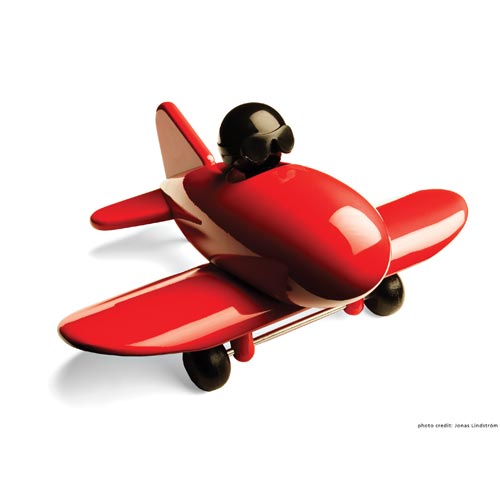
Playforever’s retro styling appeats to parents and tots, too.
GO FOR GIFTS
If you don’t have the floor space to dedicate to toys, consider carrying a small selection of giftables, like plush, books and wooden classics. These make ideal add-on purchases, says Carol Adams, owner of Torly Kid in New York, especially if they’re merchandised throughout the store in thoughtful vignettes of coordinated items. “People looking at clothes will pick up a toy that they might not normally have seen if they were in a separate section because they weren’t looking in that area before,” she says.
Villegas agrees: “Fifty percent of my job as a retailer is to buy nice things, but the other 50 percent is merchandising it well. That’s what makes a sale.” When it comes to gift items, she bases her choices on design and packaging. “Visually, the product has to go with my clothing. And when I order plush, cuddly toys, they need to feel really good,” she says, naming British brand Jellycat’s soft toys as a customer favorite.
LOOK FOR CLASSIC LICENSES
“Pop culture and licensing are always a huge influence on the toy market, and 2014 may be one of the most successful movie-toy tie-ins in recent history,” Appell states. A plethora of anticipated blockbusters hit the big screen this year, including: The Lego Movie, Captain America: The Winter Soldier, The Amazing Spider-Man 2, X-Men: Days of Future Past, Guardians of the Galaxy and Teenage Mutant Ninja Turtles. Thanks to promotions timed to boost box office numbers, toymakers can look forward to a bumper crop of movie-related sales. But in such a saturated market, it’s often tough for independent stores to compete with big box shops. And picking a hit can be especially tricky since ticket sales and toy sales don’t always go hand in hand, notes Jim Silver, CEO and editor-in-chief of TimetoPlayMag.com. “You can have a movie like Planes that was not a big box office number but in retail it was absolutely phenomenal. It didn’t have a huge demographic but it did appeal to 3- to 5-year-old boys and they wanted to bring those characters home. That could bring a lot of people to the store during a normally quiet period.”
Towles, however, cautions that unless the product has a literary tie-in, such as Thomas the Train, specialty stores should leave licensing to the big guys, and Gray agrees. She notes that her customers love Manhattan Toy’s Cat in the Hat plush, but that not every toy needs a licensed character. “Some licenses have great staying power and invoke happy memories for children and parents alike, like Star Wars, Harry Potter and Mickey Mouse. Some are silly. As a specialty retailer you must ask what the license does to improve the toy,” she says.
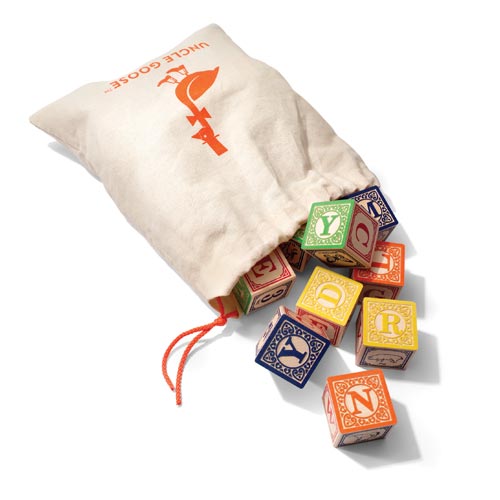
Uncle Goose blocks are a hit with Tribeca moms and tourists alike at Yoya.
GET TECHY
Kids are more plugged in than ever before and if current trends persist, tech-driven play will continue its reign in 2014. A survey conducted for PBS Kids found that more than half of parents with children ages 2 to 10 planned to buy a tech item for their kids last year, and two-thirds revealed they planned to give a tablet or smartphone. Technology companies are racing to introduce gadgets designed for smaller hands, hoping to woo naysayers by including educational elements. Not to be outdone, the toy industry is becoming a lot more thoughtful about finding meaningful ways to incorporate tech into toys so that the play experience is enhanced, not overshadowed.
But specialty stores should be careful, warns Gray, and offer something consumers can’t find in the big box stores. Paul Nippes, owner of New York’s Kidding Around, recently added the Sparkup Magical Reader to his toyshop’s inventory and he’s hoping it will be a hit. The device clips onto books and allows parents to record a brief message for every page. Next time a child opens the book, the Sparkup recognizes the page and plays the recorded sound file. “Toymakers are making sure if tech is used in a toy that it’s fun,” Appell says.
OLD SCHOOL IS COOL
Retro toys are still hot for 2014, with dolls, board games and puzzles leading the way. “Non-battery operated basic play categories have grown tremendously during the high technology boom because parents don’t want their kids on screens 24-7,” states Silver, of TimetoPlayMag.com. Dominoes and Scrabble received the most online shopping searches in 2012, according to search engine site Twenga, while toys that require make-believe role play topped last year’s lists. As Gray points out, “What parent or grandparent doesn’t love sharing their favorite toys, games and books with their children and grandchildren?”
Villegas says that toys that recall simpler times, like Playforever racing cars, wooden push toys from Petit Collage and marbles by Parisian brand Pirouette Cacachouete, always sell through at Yoya. As Silver points out, “What’s old is new to today’s child. The toy just needs to be modernized and updated for them.” He adds, “A lot of toys never go out of style because kids today, in a lot of ways, still play very similarly to the way kids did years ago.”
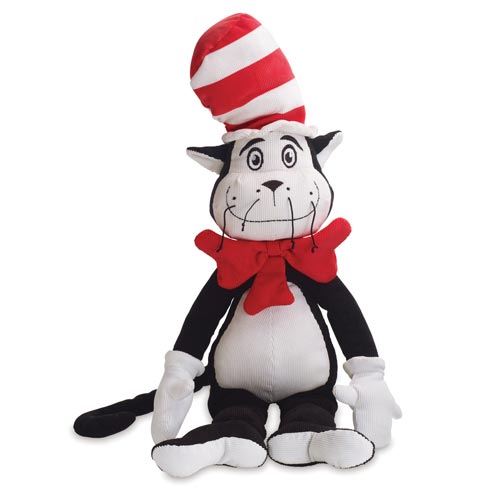
Manhattan Toy’s Cat in the Hat plush is a popular pick at Lark Toys.
BE WARY OF “MADE IN CHINA”
Before diving into the toy category, Nippes suggests considering the concerns of your consumer, as Chinese-made toys may put off many parents. “People often come in to the store and ask ‘What do you have that’s not made in China?’” he shares, noting that concerns still linger in the wake of the country’s 2007 lead paint scandal. Suzanne Price, owner of organic-centric children’s chain Sprout, agrees. “There have been a lot of problems with lead and other chemicals being in toys from China. People don’t trust them,” she says. Instead she suggests Green Toys, a line of classic playthings made in the U.S.A. from recycled plastic and other environmentally friendly materials, and wooden toys and games from Vermont-based Maple Landmark.
But while Villegas says her selection of Michigan-made alphabet blocks from Uncle Goose are popular at Yoya, she thinks it has more to do with the craftsmanship of the product than the homegrown label. “Consumers don’t come in to my store looking for American-made product. They want something that looks good and that’s not from China. If it’s organic or made in America that’s just a bonus,” she says.
THINK SAFETY
Over the last five years, the U.S. Consumer Product Safety Commission (CPSC) and Customs and Border Protection (CBP) seized more than 9.8 million units of about 3,000 different toys that violated lead and phthalates limits. These products never made it onto store shelves or into children’s hands. Appell declares this a great development. “As an industry, toy safety really is our No. 1 priority. We want to assure consumers that toys that are sold here in the U.S. are really held accountable and held up to really strict federal standards,” she says.
In fiscal year 2013, the CPSC issued only 31 toy recalls, none of which involved a lead violation. The majority of recalls announced last year were due to ingestion hazards, including chemical and magnetic dangers. But while a lot has been done, there’s much more to do. “The CPSC has only outlawed very specific chemicals and only outlawed them in toys for children under 3 that could end up in kids’ mouths,” argues Price, urging retailers to do their research and only buy from a trusted brand. And if you know your toys are safe, promoting that is paramount. “It will make consumers question what’s safe in other stores and spread that message.”
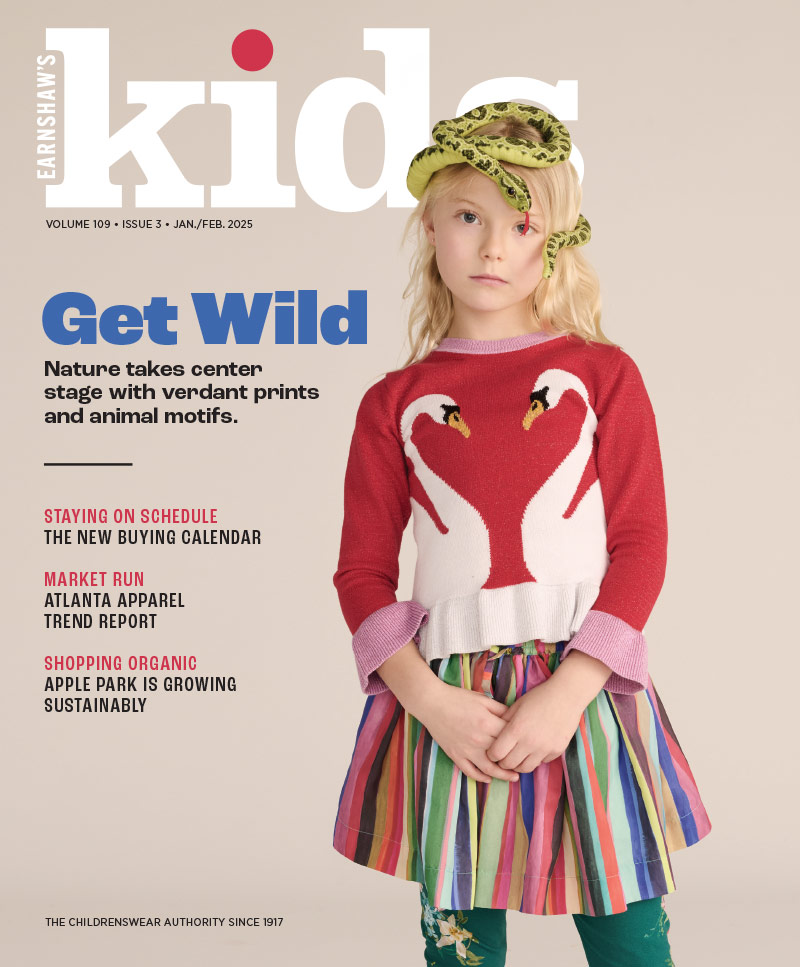


Leave a Comment: